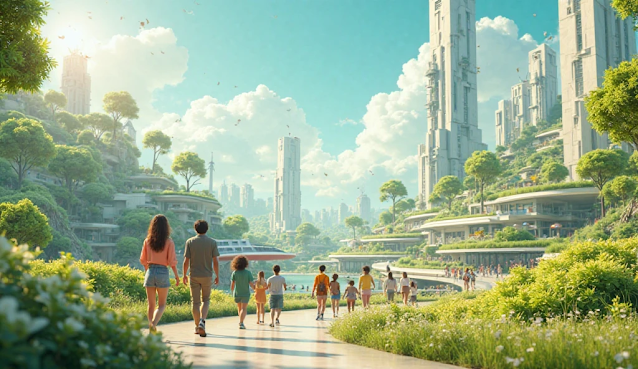W2: "My Invention to Save the Earth"
SDG 13: Climate Action & SDG 14: Life Below Water
Figure 1.1: Ai generated image of ocean pollution
Aqualoom is a network of bioengineered
underwater capsules, each the size of a basketball, that work together to
purify ocean water, absorb excess carbon dioxide, and break down plastic waste.
These capsules, or “Loom Pods,” are powered by renewable solar and tidal energy
and operate autonomously across vast stretches of the ocean. Their outer shells
are crafted from biodegradable, ocean-safe materials, and they contain living
microalgae enhanced through safe bioengineering. These microalgae are capable
of absorbing CO₂ 20 times faster than normal and converting it into harmless
oxygen and biomass, which is then released back into the ecosystem. In
addition, each Loom Pod is equipped with microscopic nanobots that break down
microplastics into harmless organic compounds.
Figure 1.2: Ai generated image of Aqualoom
The operation of Aqualoom is coordinated
by an AI control centre called the Blue Core, stationed on a floating satellite
platform. Blue Core constantly monitors ocean conditions temperature, salinity,
pollution levels and sends real-time instructions to the Loom Pods. For
example, if a region is found to have a dangerously high CO₂ concentration or
plastic density, Loom Pods are deployed in swarms to that area. The invention
is designed for use by governments, environmental organizations, and marine
researchers. Deployment is simple drones and ships equipped with launch
mechanisms drop the Loom Pods into targeted zones, where they sink gently and
activate upon contact with saltwater.
The problem Aqualoom solves is twofold:
ocean pollution and climate change. Microplastics not only harm marine animals
but also enter our food chain, while carbon emissions contribute to ocean
acidification, bleaching coral reefs and disturbing marine ecosystems. By
cleaning plastics and sequestering CO₂, Aqua Loom helps restore balance to
marine habitats. In regions where coral reefs are dying, the oxygen and clean
environment created by Loom Pods can aid natural reef regeneration. Fishermen,
coastal communities, and marine biodiversity all benefit from the healthier
waters.
To illustrate the impact, let’s imagine the
Indian Ocean in the year 2035. After a decade of Aqualoom deployment, plastic
pollution has dropped by 60%, and ocean acidity levels have returned to
pre-2000 levels. Species once declared endangered, like the hawksbill turtle
and several reef fish, are making a comeback. Coral reefs around the Maldives
are showing signs of recovery, thanks to improved water quality and lower
temperatures. Not only has Aqua Loom healed the ocean, but it has also slowed
down climate change by removing significant amounts of greenhouse gases.
Innovation like Aqualoom is essential in
the fight against environmental destruction. Traditional methods of cleanup and
carbon reduction are slow, expensive, and sometimes ineffective. But with
creative thinking and bold action, we can reimagine how technology serves the
Earth. Inventions that work in harmony with nature like Aqualoom represent a
new era of environmental stewardship. They empower individuals, governments,
and future generations to become guardians of the planet, rather than passive
bystanders.
In conclusion, Aqualoom may be fictional,
but the problems it addresses are very real. This invention symbolizes what’s
possible when science, imagination, and determination unite to tackle the
world’s greatest challenges. Supporting Sustainable Development Goals 13 and
14, Aqualoom not only protects marine life but also helps stabilize our
climate. If more energy and funding are directed toward eco-innovation like
this, our Earth may still have a fighting chance. It’s time we embrace
futuristic solutions to save our oceans and ultimately ourselves.
Yinuo. (2024, April 30). Goal 14: Life Below Water - United Nations Sustainable Development. United Nations Sustainable Development. https://www.un.org/sustainabledevelopment/goal-14-life-below-water/
Creative, W. &. W.
(2024, September 5). SDGs #13, #14 and #15 - Climate Action to preserve Life
below Water and Life on Land — ESGmark®. ESGmark®. https://www.esgmark.co.uk/blog/sdgs13-14-15-climate-action






Comments
Post a Comment